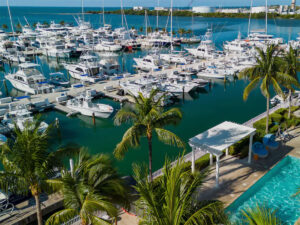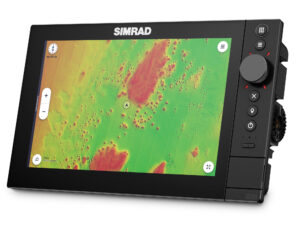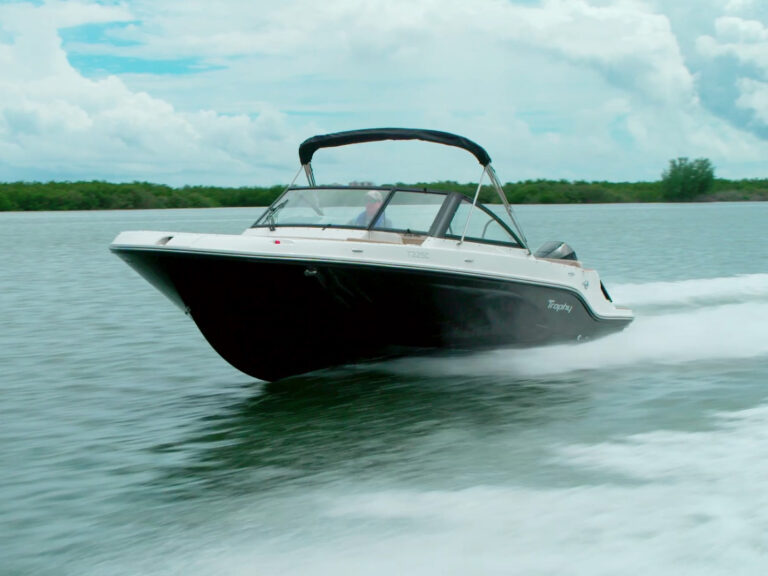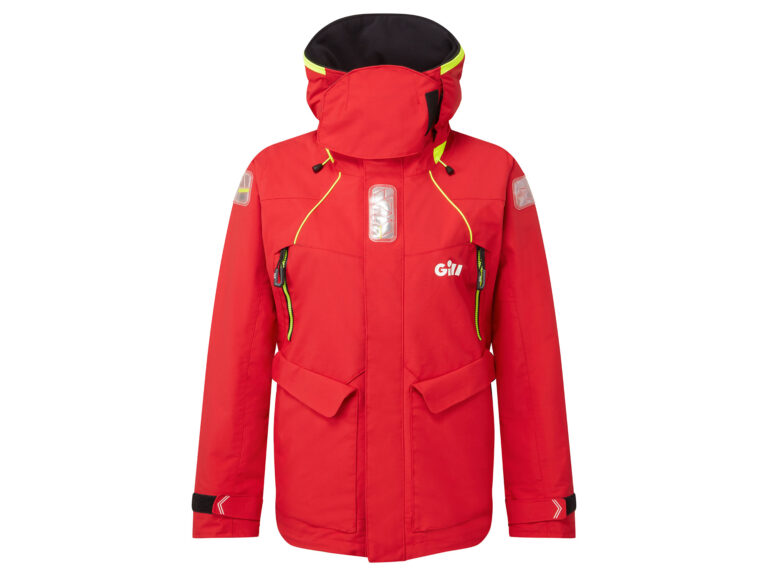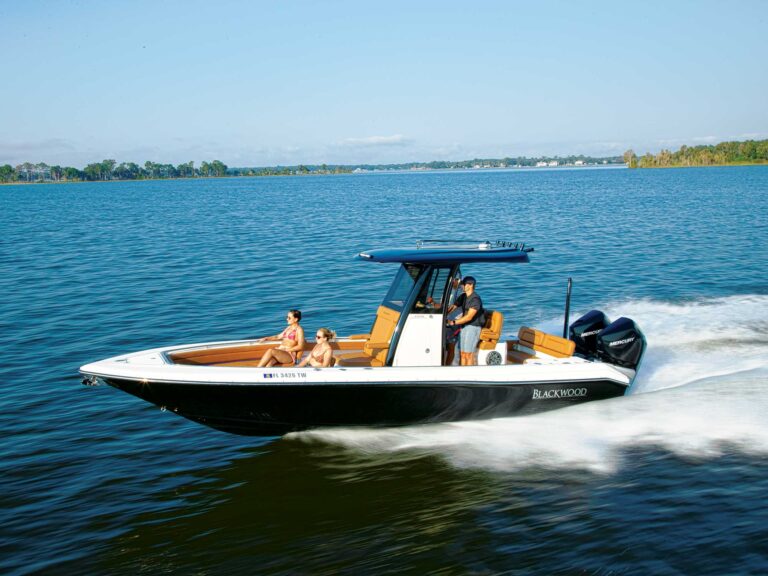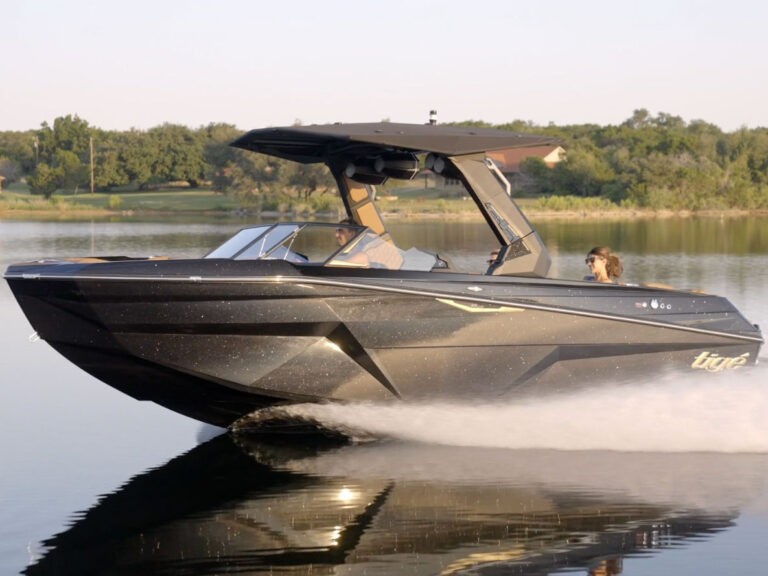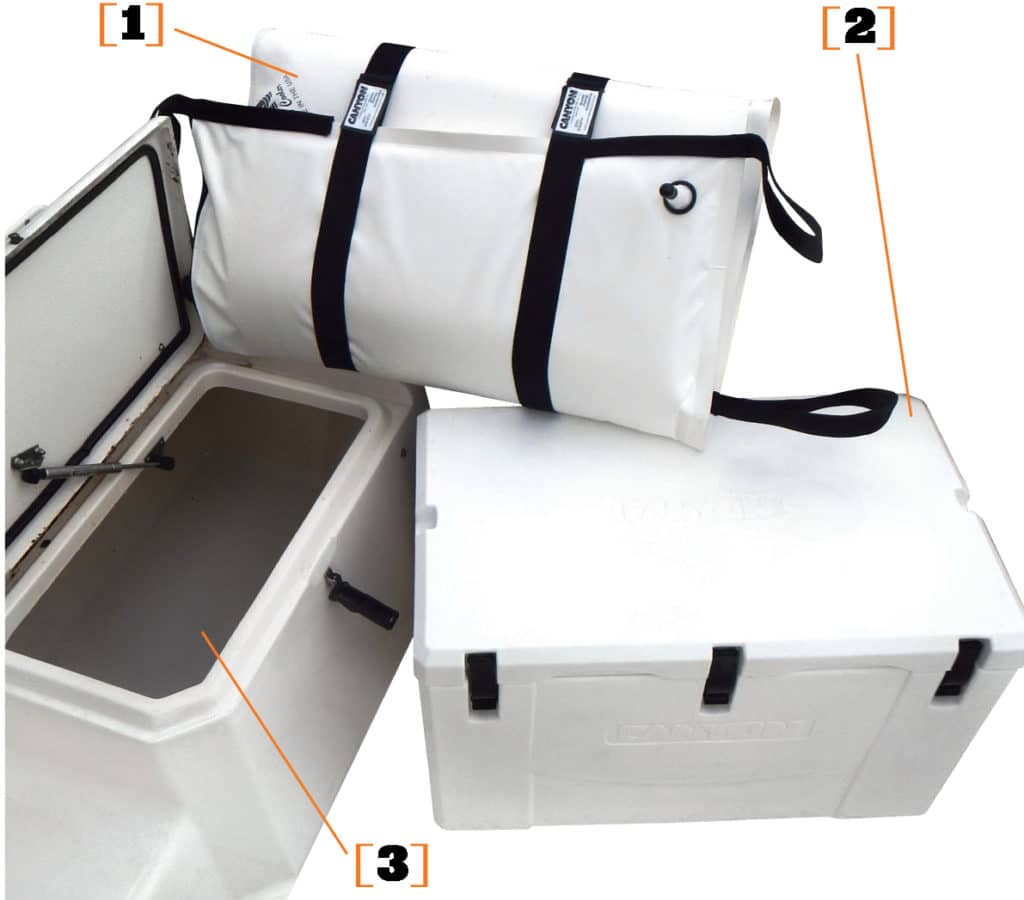
With 14 different charter boats spanning four decades under my Top-Siders, and having chartered trips on hundreds of other boats, I can say that having enough built-in chill space on board for bait, ice and the catch of the day is an afterthought to some boatbuilders. My trio of deep-freeze solutions for this challenge follows the logic of my “Easy Tackle-Stowage Additions” article: portable, transitional and permanent.
[1] Portable: The roll-up, insulated fish bag was a great invention when it hit the scene in the 1990s. Roll-up bags are currently offered by Canyon, Boone, Reliable, Smith and others. I purchased a Canyon medium boat bag (30 inches high by 65 inches wide) in 1999 that I still use today. For this season, I downsized to a Canyon Striper bag (30 inches high by 54 inches long) that tucks away neatly in my EdgeWater 228CC’s head area and is eminently portable when chartering trips on other anglers’ boats. Most of these roll-up fish bags feature ½- or ¾-inch closed-cell foam insulation on either side, easy-cleanup neoprene inner and outer skins, heavy-duty zippers, convenient carry handles and straps on each end, plus handy drain plugs. Portable fish bags don’t have the extreme R-insulation value of big-box coolers, but when you don’t need them, they are out of sight and out from underfoot in the cockpit.
[2] Transitional: Traditional plastic or fiberglass coolers manufactured by Igloo, Coleman, Frigid-Rigid, Yeti, Canyon, Engel, Icey-Tek and others earn the transitional tag. When you need them, they serve as an integral part of your vessel’s layout like a seat but can be removed as needed. These box coolers range in size from 54 to 600 quarts, and the R-value on some in the latest generation is off the charts, with up to 2 inches of closed-cell foam insulation.
I utilize two transitional boxes aboard my EdgeWater. A 94-quart Igloo Marine cooler tucks under the leaning post and takes up zero cockpit space. If my charter customers want to sit on something soft, I snap on its 2-inch-thick cushion. Forward of the console, I installed a Canyon 75-quart cooler that, in addition to icing down two cans of shark chum and a flat of mackerel, doubles as a bench-style seat. The 2-inch-thick closed-cell polyurethane foam insulation combined with the O-ring seal in the lid keeps the deep chill intact for a week. If you have a smaller fishing boat, you will need to be creative when installing and using these coolers to not compromise foot space. I incorporated a pair of Frigid-Rigid 210-quart fiberglass coolers on my old Phoenix 27 as combo bench-style seats and fish boxes, and it was a perfect solution, since the roomy 27-by-10-foot layout and huge cockpit offered enough room to make that work.
[3] Permanent: Unfortunately, the permanent insulated fish-box storage aboard many boats is often inadequate, which is why portable and transitional fish-box storage solutions need to be implemented. The best boatbuilders thoroughly think through the engineering of built-in fish boxes, but others do not. I prefer a permanent fish box that drains its watery contents overboard, whether while underway or at rest, via gravity rather than electric pumps that can clog or fail at the worst possible moments. Some famous builders do not employ this higher level of engineering, so as my Roman forebears used to say: “caveat emptor,” or let the buyer beware.
Quick Tip: A piece of foam-board insulation or a product like the Kooler Cap ($20 to $30, koolercap.com) placed atop the ice will help keep ice in a cooler frozen longer. — Kevin Falvey

